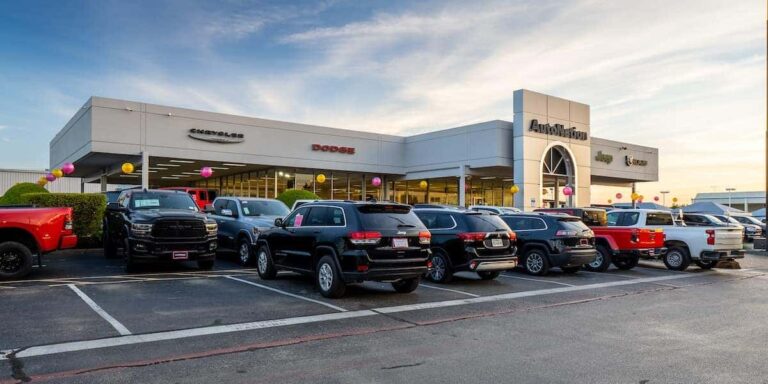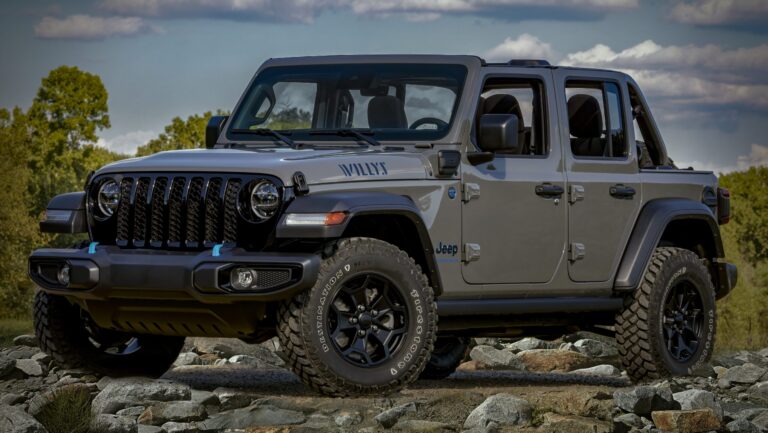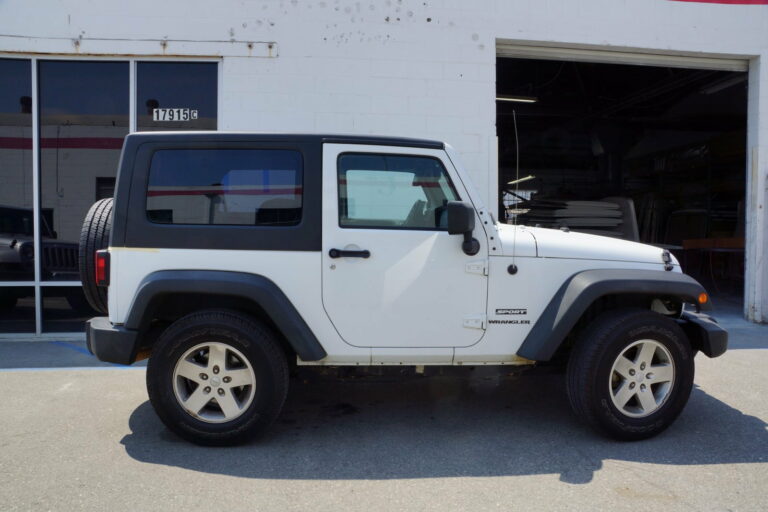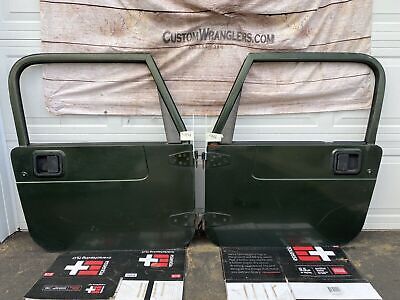The Jeep Cherokee KL Wiki: Unpacking a Modern Icon
The Jeep Cherokee KL Wiki: Unpacking a Modern Icon jeeps.truckstrend.com
The automotive landscape is replete with vehicles that push boundaries, redefine segments, and spark passionate debates. Among them, the fifth-generation Jeep Cherokee, known by its chassis code KL, stands as a particularly compelling example. Launched in 2013 as a 2014 model, the KL represented a radical departure from its predecessors, embracing a contemporary, unibody platform and a highly polarizing design. This article serves as a comprehensive "Jeep Cherokee KL Wiki," a detailed guide designed to explore every facet of this influential SUV, from its controversial inception to its enduring legacy, offering insights for current owners, prospective buyers, and automotive enthusiasts alike.
The importance of the KL generation cannot be overstated. It was a bold gamble by Jeep to modernize the Cherokee nameplate, moving it from its traditional, rugged, body-on-frame roots to a more refined, car-like crossover platform. This shift aimed to broaden its appeal to a global audience seeking comfort, fuel efficiency, and advanced technology without entirely sacrificing the brand’s legendary off-road capability. While initially met with skepticism, particularly regarding its distinctive front-end styling, the KL quickly proved to be a sales success, solidifying Jeep’s position in the highly competitive compact SUV market and paving the way for future unibody models. Understanding the KL means understanding a pivotal moment in Jeep’s evolution.
The Jeep Cherokee KL Wiki: Unpacking a Modern Icon
The KL Generation: A Paradigm Shift
The development of the Jeep Cherokee KL was a strategic move by Chrysler (now Stellantis) to leverage global platforms for greater efficiency and shared technology. The KL is built on the Compact US Wide (CUSW) platform, which is derived from the Alfa Romeo Giulietta. This unibody construction, a significant departure from the XJ (1984-2001) and KJ/KK (2002-2012) generations, allowed for improved on-road dynamics, ride comfort, and fuel economy. Manufactured primarily in Belvidere, Illinois, the KL entered a market hungry for versatile crossovers.
Its launch was marked by a blend of anticipation and apprehension. Purists questioned whether it could truly wear the "Cherokee" badge given its softer lines and car-based underpinnings. However, Jeep was clear: the KL was designed to blend the brand’s core values of capability and adventure with the demands of modern daily driving. It aimed to be a true "go-anywhere, do-anything" vehicle, but in a package more suited to urban commutes and long highway journeys.
Design and Aesthetics: Love It or Hate It?
Perhaps no single aspect of the Jeep Cherokee KL sparked more discussion than its exterior design, particularly its controversial front fascia. Breaking from traditional Jeep aesthetics, the KL featured a distinctive, split-headlight arrangement with slim LED daytime running lights positioned high, and the main projector-beam headlights nestled lower in the bumper. This "face" was often described as futuristic, alien, or even frog-like, depending on the observer. The iconic seven-slot grille remained, albeit with a more swept-back, aerodynamic interpretation.
Beyond the headlights, the KL’s overall profile was sleek and aerodynamic, a deliberate move to improve fuel efficiency. Its raked windshield, flowing lines, and less boxy silhouette signaled a clear shift towards a more contemporary SUV design. The interior, by contrast, was largely praised for its ergonomic layout, quality materials, and user-friendly infotainment system. Jeep aimed for a sophisticated yet rugged cabin, offering comfortable seating and ample cargo space for its class. Whether one loved or hated its exterior, the KL’s design undeniably made a statement and ensured it stood out in a crowded segment.
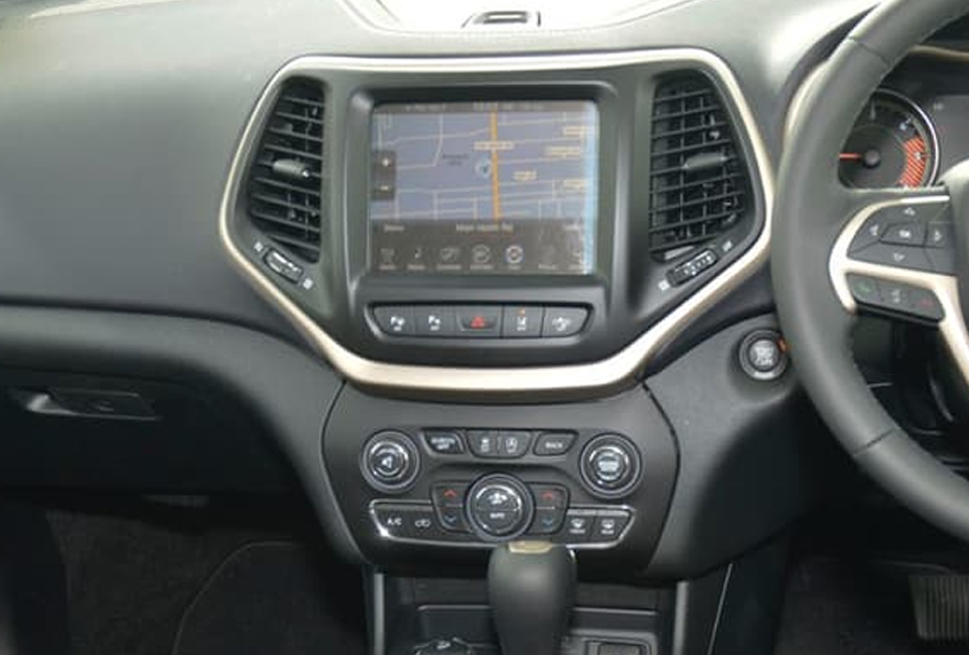
Powertrain Options: Balancing Efficiency and Capability
The Jeep Cherokee KL offered a range of engine options designed to cater to different priorities, from fuel efficiency to robust towing capability.
- 2.4L "TigerShark" MultiAir I4: This was the base engine, producing around 184 horsepower and 171 lb-ft of torque. It emphasized fuel economy, making it suitable for city driving and light highway use. However, some drivers found it underpowered for heavier loads or spirited acceleration. Early models sometimes faced oil consumption issues, which were largely addressed by later software updates and revised components.
- 3.2L "Pentastar" V6: A scaled-down version of the larger Pentastar V6, this engine delivered 271 horsepower and 239 lb-ft of torque. It offered significantly more power and torque, making it the preferred choice for those who needed better acceleration, towing capacity (up to 4,500 lbs), or frequent highway driving. It generally offered a good balance of power and reasonable fuel economy for a V6.
- 2.0L Turbo I4 (2019 Facelift Onwards): Introduced with the 2019 facelift, this turbocharged engine offered an impressive 270 horsepower and 295 lb-ft of torque. It blended the fuel efficiency benefits of a four-cylinder with V6-like power, providing excellent low-end torque and responsiveness. This became a popular option, especially for those seeking a modern, punchy feel.
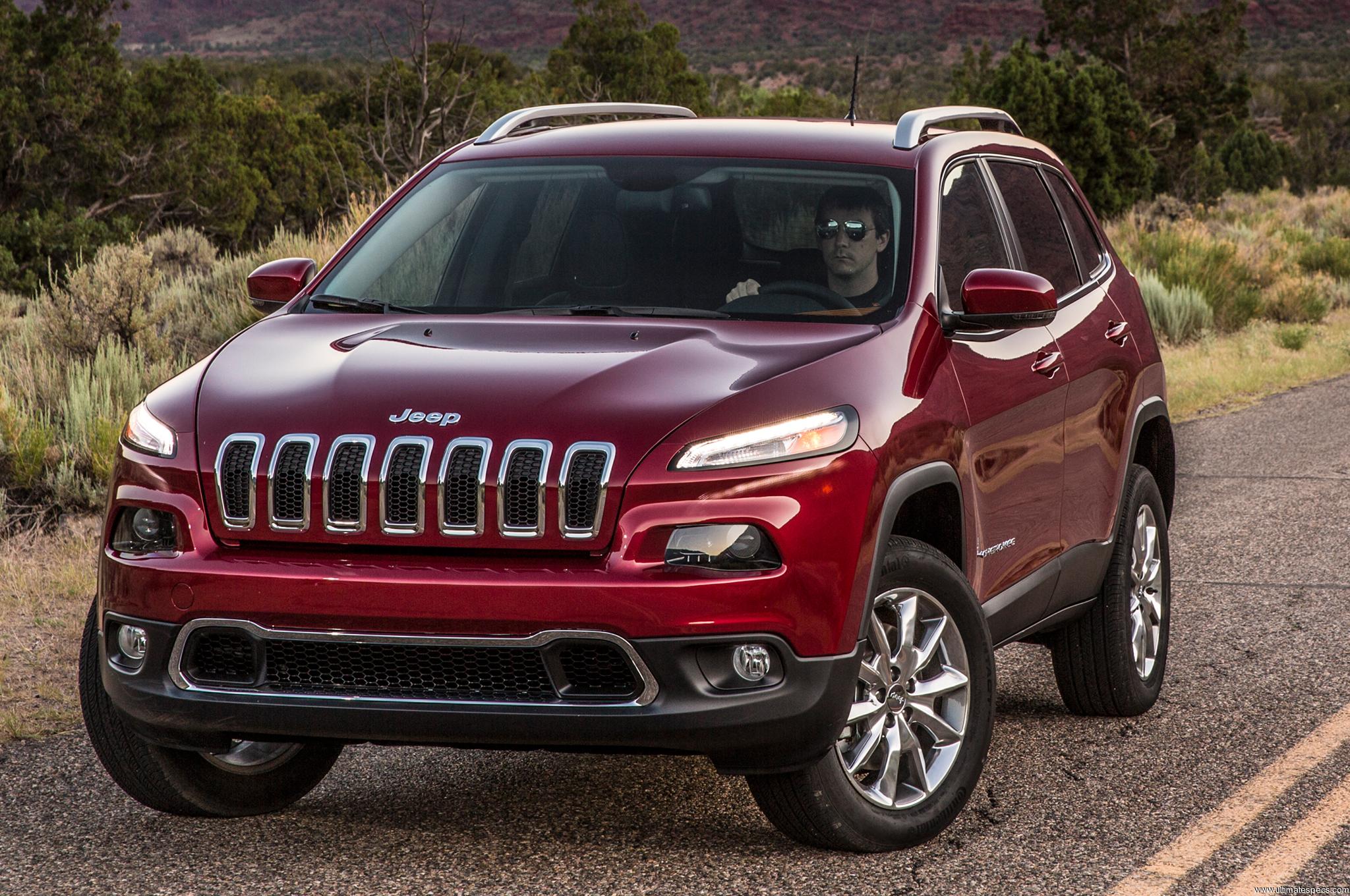
All engine options were exclusively paired with a ZF-sourced 9-speed automatic transmission. While cutting-edge at its introduction, this transmission faced initial criticism for rough shifts, slow engagement, and unpredictable behavior, particularly in earlier model years. Subsequent software updates significantly improved its performance, making it smoother and more refined over time.

Capability and Off-Road Prowess: Still a Jeep?
Despite its unibody construction, the Jeep Cherokee KL maintained a strong focus on off-road capability, living up to the brand’s reputation. It offered several sophisticated 4×4 systems:
- Active Drive I: A basic, fully automatic 4×4 system that seamlessly engages four-wheel drive when needed, primarily for traction on slippery surfaces. It’s suitable for light-duty off-roading, snow, and rain.
- Active Drive II: Builds upon Active Drive I by adding a low-range mode (2.92:1 gear ratio) for increased torque multiplication, crucial for rock crawling and challenging inclines. It also features a neutral mode for flat towing. This system significantly enhances off-road performance.
- Active Drive Lock (Exclusive to Trailhawk): The most capable system, incorporating all features of Active Drive II, plus a mechanical locking rear differential. This provides maximum traction in extreme off-road conditions by ensuring power is distributed equally to both rear wheels.
All 4×4-equipped KL models featured the Selec-Terrain Traction Management System, allowing the driver to select specific modes (Auto, Snow, Sport, Sand/Mud, Rock – the last being exclusive to Trailhawk) that optimize the powertrain, braking, and 4×4 systems for various terrains.
The Trailhawk trim level stood out as the pinnacle of KL off-road capability. It proudly bore the "Trail Rated" badge, signifying its proven ability in five key areas: traction, ground clearance, maneuverability, articulation, and water fording. The Trailhawk boasted unique features like increased ground clearance (up to 8.7 inches), skid plates, red tow hooks, and aggressive off-road tires. For anyone serious about venturing off the beaten path, the Trailhawk was the clear choice, demonstrating that a unibody Cherokee could indeed be a "real Jeep."
Practical Advice:
- For everyday driving and occasional snowy conditions, Active Drive I is sufficient.
- If you plan to tackle moderate trails or require better traction in challenging weather, Active Drive II is a worthwhile upgrade.
- For serious off-roading, the Trailhawk with Active Drive Lock is indispensable.
Trim Levels and Features: A Spectrum of Choices
The Jeep Cherokee KL was offered in numerous trim levels, catering to a wide range of budgets and preferences, from basic utility to luxurious comfort and extreme off-road capability.
- Sport (later Latitude): The entry-level trim, offering essential features like a Uconnect infotainment system (smaller screen), cloth seats, and basic safety features. It was often available with FWD or Active Drive I.
- Latitude (later Latitude Plus, Latitude Lux): A step up, adding more comfort and convenience features such as alloy wheels, upgraded interior trim, satellite radio, and often a larger Uconnect touchscreen.
- Limited: The more luxurious trim, featuring leather upholstery, heated front seats, power liftgate, premium audio, and a larger Uconnect system with navigation. It often included more advanced safety features as options.
- Overland: The top-tier luxury trim, offering premium Nappa leather, ventilated front seats, wood trim, an upgraded Uconnect system, unique exterior styling, and a comprehensive suite of safety technologies.
- Trailhawk: The dedicated off-road trim, as detailed above, with its rugged styling, enhanced capability features (Active Drive Lock, skid plates, etc.), and unique interior accents.
Practical Advice:
- Consider your primary use case: commute, family hauler, or off-road adventurer.
- Prioritize features: Do you need leather, a premium sound system, or advanced safety tech?
- Balance budget with desired capability. A used Latitude or Limited often offers excellent value for daily driving, while a Trailhawk commands a premium for its specialized features.
Technological Innovations and Safety Features
The KL generation brought the Cherokee firmly into the modern era of automotive technology.
- Uconnect Infotainment: Jeep’s Uconnect system was a highlight, available with 5.0-inch, 7.0-inch, or 8.4-inch touchscreens. It was generally praised for its intuitive interface, quick response times, and clear graphics. Later models (from 2018 onwards) incorporated Apple CarPlay and Android Auto integration, significantly enhancing connectivity.
- Advanced Driver-Assistance Systems (ADAS): The KL offered a comprehensive suite of safety technologies, particularly on higher trims. These included:
- Adaptive Cruise Control with Stop & Go: Maintains a set distance from the vehicle ahead.
- Forward Collision Warning with Active Braking: Alerts the driver to potential front-end collisions and can apply brakes automatically.
- LaneSense Lane Departure Warning with Lane Keep Assist: Warns if the vehicle drifts out of its lane and can provide steering correction.
- Blind-Spot Monitoring with Rear Cross-Path Detection: Alerts the driver to vehicles in blind spots and to cross-traffic when backing up.
- Parallel and Perpendicular Park Assist: Semi-autonomous parking assistance.
- Safety Ratings: The Jeep Cherokee KL consistently performed well in crash tests. The National Highway Traffic Safety Administration (NHTSA) awarded it a 5-star overall safety rating in most model years, and the Insurance Institute for Highway Safety (IIHS) gave it good ratings in many of its evaluations, especially with optional safety equipment.
Common Issues and Owner Feedback
While generally reliable, the Jeep Cherokee KL, like any complex vehicle, had its share of common issues and owner feedback points:
- 9-Speed Transmission Quirks: As mentioned, early models (2014-2015) were particularly prone to rough shifts, hesitation, and sometimes erratic behavior from the ZF 9-speed automatic transmission. Most of these issues were significantly mitigated by numerous software updates issued by Jeep. Prospective buyers of early models should ensure these updates have been applied.
- Uconnect Glitches: While user-friendly, some owners reported occasional freezing, slow response, or connectivity issues with the Uconnect system. Software updates often resolved these.
- 2.4L Engine Oil Consumption: A notable issue with the 2.4L "TigerShark" engine in some early production runs. This led to excessive oil consumption. Jeep addressed this with revised components and warranty extensions for affected vehicles.
- Electrical Issues: Less common but reported issues include minor electrical gremlins, such as malfunctioning sensors or dashboard warning lights.
- Interior Noise: Some owners noted road or wind noise, particularly at highway speeds, though this varied by trim and tire choice.
Practical Advice for Buyers:
- Service History is Key: Always ask for detailed service records.
- Test Drive Thoroughly: Pay close attention to transmission shifting, especially at various speeds and during stop-and-go traffic.
- Check for Recalls: Ensure all relevant recalls have been addressed.
- Pre-Purchase Inspection: A trusted mechanic can identify potential issues before you buy.
- Consider Later Models: Models from 2016 onwards, and especially the 2019 facelift, generally benefit from improved refinement and addressed initial launch issues.
Facelift and Evolution (2019-Present)
In 2019, the Jeep Cherokee KL received a significant mid-cycle refresh that addressed some of the initial design criticisms and enhanced its overall appeal.
The most noticeable change was the redesigned front fascia. The controversial split-headlight design was replaced with a more conventional, integrated headlamp cluster, bringing the main headlights back into a single unit, closer to what most people expect from a vehicle. This change made the KL’s face less polarizing and more universally appealing. The grille was also subtly revised, and the rear received a new tailgate and updated taillights, along with a relocated license plate.
Beyond the aesthetics, the 2019 facelift introduced the new 2.0L Turbo I4 engine as an option, offering a powerful and efficient alternative to the V6. The Uconnect infotainment system was also updated, with improved graphics, faster processing, and standard Apple CarPlay and Android Auto on most trims. These updates helped keep the KL competitive in a rapidly evolving segment, improving its on-road refinement, technology, and overall user experience.
The Future of the Cherokee KL and its Legacy
Production of the Jeep Cherokee KL for the North American market concluded in early 2023, marking the end of a significant chapter for the Cherokee nameplate. Its discontinuation was part of Stellantis’s broader strategy to streamline its lineup and transition towards electrification.
The legacy of the Jeep Cherokee KL is multifaceted. It was a bold experiment that paid off handsomely in terms of sales, proving that a unibody, more car-like Jeep could thrive without entirely abandoning the brand’s core values. It successfully bridged the gap between traditional SUVs and modern crossovers, offering a unique blend of on-road comfort, advanced technology, and genuine off-road capability (especially in Trailhawk form).
While its design may forever remain a point of contention, the KL undeniably brought new customers to the Jeep brand and maintained the Cherokee’s relevance in a new era. It laid the groundwork for future unibody Jeeps, demonstrating the brand’s willingness to innovate and adapt while still holding true to its adventurous spirit. The KL will be remembered as a pioneer, a controversial yet ultimately successful vehicle that helped shape Jeep’s modern identity.
Jeep Cherokee KL Estimated Pricing Guide (Hypothetical)
This table provides estimated pricing information for the Jeep Cherokee KL, reflecting both its original Manufacturer’s Suggested Retail Price (MSRP) when new (for a representative model year, e.g., 2018-2019) and a general range for its current used market value. Please note that actual prices vary significantly based on model year, mileage, condition, optional features, location, and market demand.
| Trim Level | Key Features / Engine (Typical) | Original MSRP Range (Approx. New, 2018-2019) | Current Used Market Value Range (Approx. 2024) |
|---|---|---|---|
| Latitude | 2.4L I4, Uconnect 7.0", Cloth Seats, FWD/Active Drive I | $25,000 – $30,000 | $12,000 – $18,000 |
| Latitude Plus | 2.4L I4 / 3.2L V6, Uconnect 8.4", Power Driver Seat | $27,000 – $33,000 | $13,000 – $19,000 |
| Limited | 3.2L V6, Leather Seats, Heated Front Seats, Power Liftgate | $31,000 – $37,000 | $15,000 – $22,000 |
| Trailhawk | 3.2L V6 / 2.0L Turbo, Active Drive Lock, Skid Plates, Off-Road Tires | $34,000 – $40,000 | $18,000 – $26,000 |
| Overland | 3.2L V6 / 2.0L Turbo, Nappa Leather, Ventilated Seats, Premium Audio | $37,000 – $43,000 | $19,000 – $28,000 |
Disclaimer: These figures are estimates and should be used for general reference only. Always consult current market data from reputable sources (e.g., Kelley Blue Book, Edmunds, NADAguides) and consider a professional inspection when purchasing a used vehicle.
Frequently Asked Questions (FAQ) about the Jeep Cherokee KL
Q1: Is the Jeep Cherokee KL a good car?
A1: Generally, yes. The KL offers a good balance of comfort, technology, and capability. While early models had some transmission quirks, later models and software updates largely resolved these. It’s a versatile SUV suitable for daily driving and, in Trailhawk form, impressive off-road adventures.
Q2: What’s the difference between Active Drive I, II, and Lock?
A2:
- Active Drive I: Basic automatic 4×4 for light duty, snow, and rain.
- Active Drive II: Adds a low-range gear for more serious off-roading (rock crawling, steep hills) and neutral mode for flat towing.
- Active Drive Lock: (Trailhawk only) Includes Active Drive II features plus a locking rear differential for maximum traction in extreme conditions.
Q3: What are the common problems with the KL?
A3: Initial 9-speed transmission issues (addressed by software updates), some reports of excessive oil consumption in early 2.4L engines (also addressed), and occasional Uconnect glitches. These are generally minor for later models or those with updated software.
Q4: Which engine is best for the KL?
A4:
- 2.4L I4: Best for fuel economy and budget-conscious buyers, sufficient for city driving.
- 3.2L V6: Offers a good balance of power for towing and highway driving.
- 2.0L Turbo I4 (2019+): Considered by many to be the best overall, combining V6-like power and torque with better fuel efficiency than the V6.
Q5: Is the Trailhawk worth it?
A5: If you plan to do serious off-roading, absolutely. Its enhanced ground clearance, skid plates, off-road tires, and Active Drive Lock system make it significantly more capable than other trims. For casual driving, its ruggedness might be overkill.
Q6: Does the KL have Apple CarPlay/Android Auto?
A6: Yes, Apple CarPlay and Android Auto were integrated into the Uconnect system starting with the 2018 model year.
Q7: When was the KL facelift?
A7: The Jeep Cherokee KL received its significant mid-cycle facelift for the 2019 model year, which included a redesigned front fascia, updated rear, and new engine option.
Q8: Is the KL unibody?
A8: Yes, the Jeep Cherokee KL is built on a unibody (monocoque) platform, a departure from the traditional body-on-frame construction of older Cherokees. This contributes to its improved on-road comfort and handling.
Conclusion
The Jeep Cherokee KL represents a pivotal chapter in the storied history of the Cherokee nameplate. It was a vehicle that dared to break from tradition, embracing modern design, unibody construction, and advanced technology while striving to retain the core off-road prowess that defines the Jeep brand. While its distinctive aesthetics initially sparked debate, the KL’s blend of on-road refinement, technological sophistication, and genuine capability (especially in its Trailhawk guise) ultimately resonated with a broad audience, securing its place as a significant sales success.
From its varied powertrain options and sophisticated 4×4 systems to its range of trim levels and advanced safety features, the KL offered a comprehensive package that appealed to diverse drivers. Despite some initial teething issues, particularly with its transmission, subsequent updates and continuous refinement improved its overall reliability and user experience. As the KL generation gives way to future models, its legacy remains one of bold innovation and successful adaptation, proving that a Jeep can evolve without losing its adventurous soul. The Cherokee KL stands as a testament to Jeep’s willingness to push boundaries, cementing its status as a modern icon in the SUV world.

